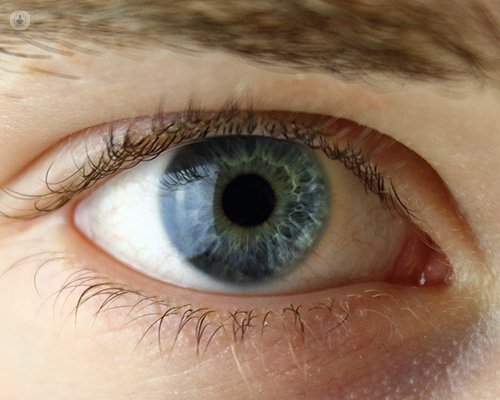Retinal detachment: causes, symptoms, and treatments explained
Written by:Retinal detachment is something that happens when a hole develops in the lining at the back of the eye, known as the retina. Once a hole appears, the retina will peel away from the back of the eye, much like wallpaper peeling off the wall, and cut off blood supply that provides the retina with oxygen and nutrients. If untreated, the condition can lead to blindness. In his latest article, leading ophthalmologist, Professor Tom Williamson explains all about retinal detachment, what the causes and symptoms are, and how it is treated.

What is the retina?
The retina is the light-sensitive lining at the back of the eye which allows you to see. The retina works in much the same way as a film in a camera, light hitting the retina is sent to the visual cortex of the brain and processed into the images you see.
What are the symptoms of a detached retina?
Most people will experience warning signs that the retina is going to detach before it does so. You may have the sudden appearance of floaters in your vision. These appear as black dots or streaks across your field of vision. You may experience one single large floater, or a cobweb effect of many floaters. Sudden short flashes of light may also be experienced, or blurred and distorted vision.
The vision in the affected eye will gradually deteriorate if nothing is done about it. If you are concerned about retinal detachment, make an appointment with a consultant ophthalmologist.
How is retinal detachment treated?
The retina can be repaired in one of two ways:
- Vitrectomy is an operation where the vitreous fluid (the clear gel that fills the eye) is removed and a gas bubble inserted in its place. The gas bubble supports the retina. The gas bubble remains in the eye until it dissolves, and is replaced with a watery fluid. The eye does not need the vitreous fluid. The gas will obscure the view of the patient at first, but over a few weeks a black line will gradually travel down the vision.
- In a few patients a small piece of plastic is sewed into the outside of the eye. This causes a dent in the eyeball, which will close the hole.
What causes retinal detachment?
Retinal detachment is usually caused by the vitreous (the gel of the eye) shrinking in middle age. The shrinking gel pulls on the retina causing a retinal hole which then leads to water going under the retina lifting it off. It can also be caused rarely by direct injury to the eye.
Retinal detachment is uncommon, and usually affects people who are aged between 40 and 70 years. It is more common in men than women.


